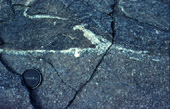
Click on any thumbnail for a bigger picture
| Possible flame-structure developed between olivine-rich and
plagioclase-rich layers in mafic cumulates. Lens cap 6cm.
| 
|
| The top of the ridge comprises
comprises 100% parallel-sided dolerite dykes. The lighter weathering
slopes at the base of the ridge consists of about 15% dolerite dykes
in gabbro and diorite.
| 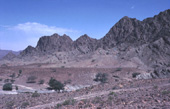
|
| Orange-brown
weathering harzburgite makes up left of picture. These are overlain
by lighter weathering, NW dipping, layered olivine gabbros. See Slide 10. | 
|
| Intensely mylonitised dunites (lighter weathering colour) and harzburgites.
| 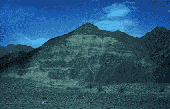
|
| Channel-fill structure (25cm deep) in rhythmically-layered
olivine gabbros.
| 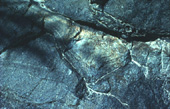
|
| Detail of 'bolster' form of pillow
lava. Hammer shaft lies parallel to long-axis of tubes. See Slide 18.
| 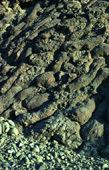
|
| About 60% of the outcrop
comprises parallel-sided (but locally cross-cutting) dolerite dykes hosted by
white weathering trondjemite.
| 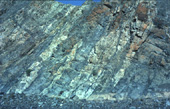
|
| The mountains are comprised of olivine gabbros.
Harzburgites occur the wadi bed. See Slide 4.
| 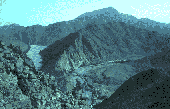
|
| The entire outcrop is made up of
dolerite dykes intruding other dolerite dykes.
| 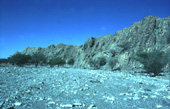
|
| Adcumulate texture in anorthosite. Field of view 2cm.
Note well developed lamination in plagioclase.
| 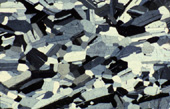
|
| Partially assimilated (note crenulate
margins) xenoliths of hydrothermally altered dolerite hosted by
trondhjemite. Lens cap 6cm.
| 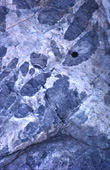
|
| Pegmatitic dykes of websterite and gabbronorite cutting
harzburgite. The gabbronorite post-dates the
websterite. Lens cap 6cm.
| 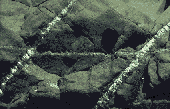
|
| Weak ratio layering in foliated pyroxene gabbro.
The igneous fabric has been overprinted by 'spots' of actinolitic
amphibole - a result of hydrothermal alteration.
| 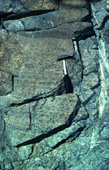
|
| Strongly foliated plagioclase lherzolite. Clots of plagioclase
and clinopyroxene are strung out in matrix of olivine and orthopyroxene. Lens cap 6cm.
| 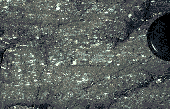
|
| Varitextured gabbro showing
leucocratic patches. The more mafic host has suffered extensive hydrothermal
retrogression with much of the clinopyroxene being replaced by an actinolitic
amphibole.
| 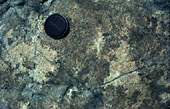
|
| The wadi cliff is made entirely of
variably hydrothermally altered basaltic pillow lavas. See Slide 8.
| 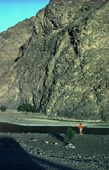
|
| Lencocratic varitextured gabbro.
Well developed needles of magmatic hornblende are seen.
| 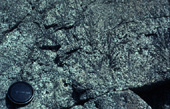
|
| Dunite pod in harzburgite.
Anastomising form is typical when undeformed.
| 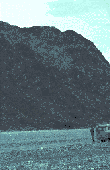
|
| Partially resorbed dolerite xenoliths cut by later dolerite
dykes. The host rock is varitextured gabbro.
| 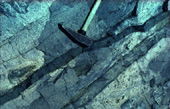
|
| Pod of pegmatitic olivine gabbro in harzburgite. Note diffuse margins.
Lens cap 6cm.
| 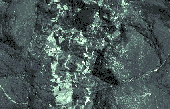
|
| Hydrothermally altered
(greenschist facies) dolerite dykes.
| 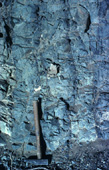
|
| Pillow lava intruded by dolerite dykes
| 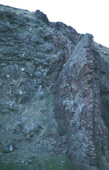
|
| Modally-graded cumulate peridotite. Stratigraphically, up is to
the right. Dunite layers (red-brown) grade with increasing mode of clinopyroxene
into wehrlite (dark-green). Lens cap 6cm.
| 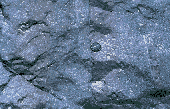
|